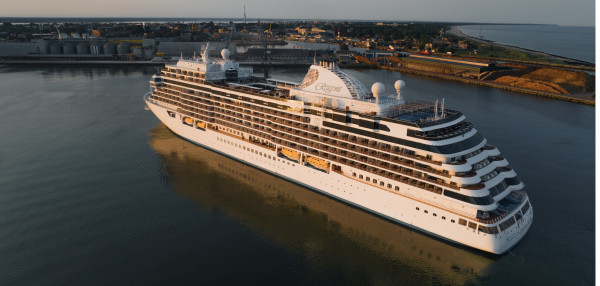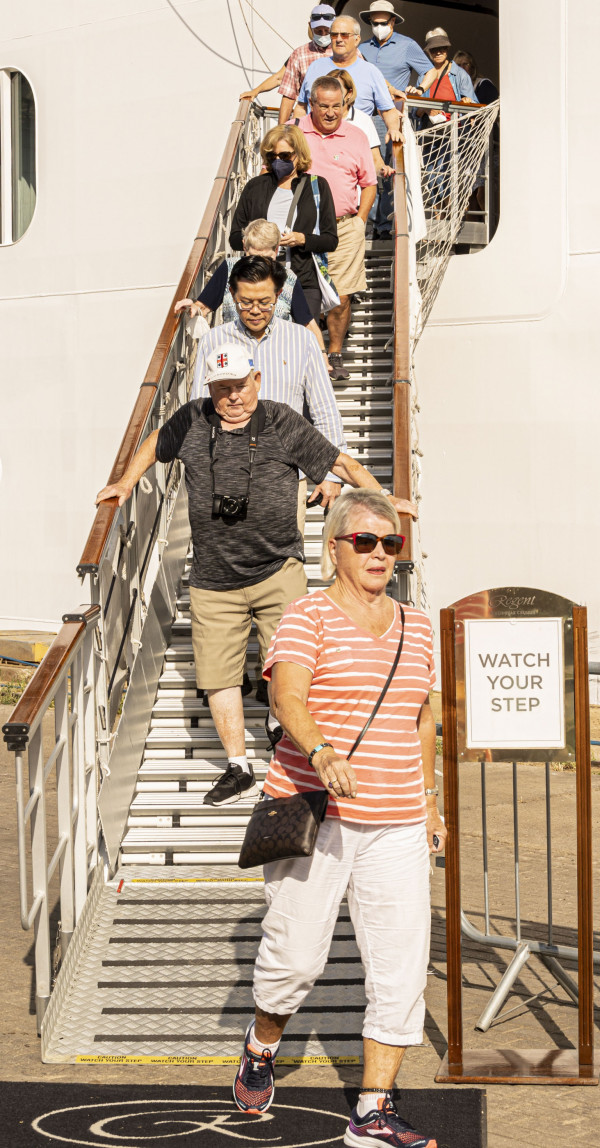We say the best possible words about each of the ports. About Riga, which, by attracting cruise ships, saved what could still be saved after the elimination of the ferry line. About Ventspils, which has taken over the functions of the largest passenger port. Speaking of Liepāja, which has reached the level of Riga in the number of passengers served with a ferry line subordinated to the transport of goods and has worked to attract cruise ships to a rather considerable extent. A small table is best for describing and comparing the passenger service work of all three ports over the eight months of this year:
–
The inability to restore or replace the ferry line destroyed by Covid-19 between the two capital cities of the Baltic Sea countries, Riga and Stockholm, is a serious symptom that something is going wrong with Riga’s development. For this, the coalition now in power in Riga blames the previous rulers as strongly as possible and receives equally strong reproaches in return. In a more muted version, mutual dissatisfaction is expressed by groups of people who govern the municipality and the state from almost the same party combinations, whose differences are too difficult for people who do not work in politics to perceive.
 –
–
–
Line pull out on cruises
The inconsistency between Riga’s status as a priority right of the capital to manage traffic with the capitals of other countries on the shores of the Baltic Sea and the non-use of these rights has haunted Riga since the late 80s of the last century, when the city as the capital of the Latvian SSR it was just preparing to return to the honor of the capital of the Republic of Latvia.
The Independent has published a study on many attempts to establish ferry lines in Riga, where “Ships appear and disappear like ghosts”. At the beginning of 2020 there was reason to think that the curse imposed on Riga was almost broken, because our neighboring company “Tallink” had been sailing on the Riga-Stockholm line for more than ten years and was constantly increasing the number of passengers carried to 800 thousand. , of which 69,000 cruise ship passengers arrived as a little extra. But then Covid-19 came and changed everything. In this, the balance of power between the owners of the ferry lines established in the Baltic Sea has changed. Among them, Estonians were given a more modest seat, more suited to little Estonia, than “Tallink” had won before Covid-19.
With the loss of the ferry line once again, Riga must underline the return to pre-covid times, at least in the cruise segment. On the eve of the opening of the 2022 maritime tourist season, on April 20, the Independent signaled the intention of the free port of Riga to serve 120 cruise ship visits, which will carry up to 130,000 passengers. By the end of August, 89 cruise ships with a total of 63,329 passengers had arrived in Riga. There were 11 other entries left, which actually were performed in September. As a result, this income is 1/5 more than the pre-covid average, but 1/5 less than expected. Compared to pre-covid times, however, the capacity of the ships has been reduced by almost half.
The changes this year are dictated by inflation and the war in Ukraine. Traveling is the first thing people tend to give up when the cost of living rises. The war in Ukraine, on the one hand, offers an elegant excuse to save, motivated by security concerns, which prevent one from approaching the war zone. But, on the other hand, this same war has pushed more ships to Daugava, which have to find a place for themselves for the time the ships previously spent in St. Petersburg and traveling to and from it. This year, shipping companies have avoided appearing in the attacking country, Russia, and plan to do without Russia for the next tourist season as well. As a result, Latvian ports have new opportunities to attract these ships. In Riga, this attraction also manifested itself in the fact that the ships stayed here overnight 18 times, which has almost never happened before.
Ventspils takes over the function of Riga
Ventspils has taken the place of the sea passenger capital of Latvia, because despite Covid-19 it has managed to maintain the ferry line. As we know, the measures to combat the disease have effectively put an end to the movement of people, but they have stimulated the movement of goods to the people trapped in their homes. The ferry between Latvia and Sweden also played its part in the movement of goods. Therefore, investments in industrialization paid off Ventspils, which maintained both supply and demand for goods in Ventspils during the Covid-19 pandemic. Seats on the ferry are now shared by freight-related people, business travelers and tourists. The ferry line is operated by the Swedish company “Stena Line”, which has effectively pushed Estonians out of the market. During the reporting period, the well-being of the Swedes was slightly damaged by a truck fire during the August 30 flight from Ventspils to Nīneshamn.
Liepāja begins to devote himself to tourism
 –
–
–
The Swedes themselves also took over the ferry service between Liepaja in Latvia and Travemindi in Germany. The success of industrialization in Liepāja is evidenced by remembering that this success is largely due to the failure of the “metallurgist Liepāja”. It was hard to imagine before that the destruction of a large enterprise not of a city, but of the entire country, would free up resources that are now used much more efficiently than in the days of metal smelting.
The six cruise ships that arrived in Liepāja during this year’s tourist season are already enough to celebrate the efforts of the city and its port (special economic zone) to attract such ships. Let the praises of Liepāja come true, which has something to show: the Cathedral of the Trinity with the presentation concerts of the largest unfinished mechanical organ in the world, the concert hall “Lielais dzintars”, the Cathedral of Nicholas, the prison of Karosta, the Jūrmala park, the beach, the market (several), etc. architectural gems that managed to escape the fires of war or demolitions in peacetime.
–

